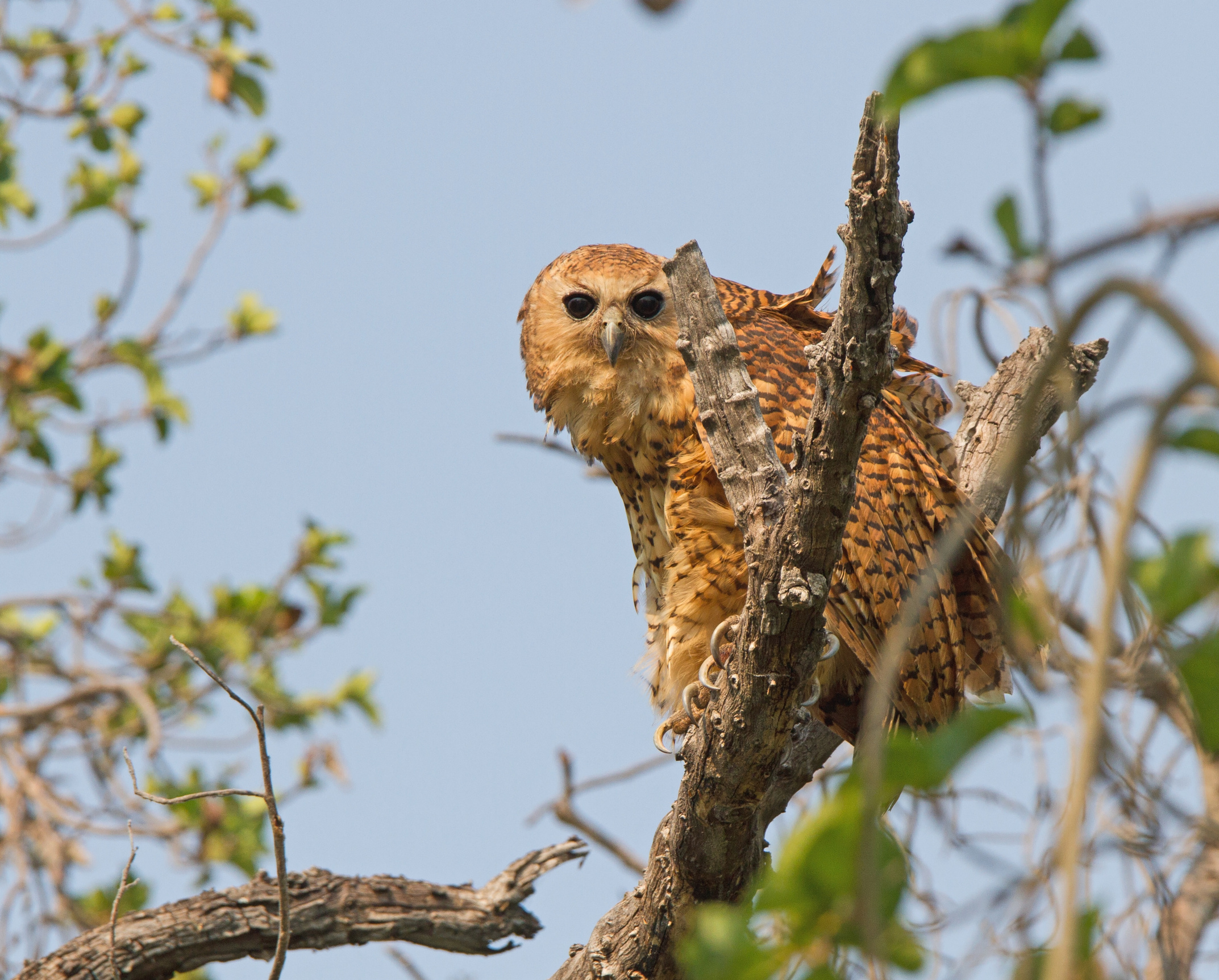Believe it or not, birding is one of the fastest growing hobbies in the world and with over 350 recorded bird species in the area, Pel’s Post is a birder’s paradise. Situated in the wildest and most remote part of the Kruger National Park, the wilderness surrounding Pel’s Post is vast and well known for its abundant bird life including less common species not often found in the southern and central regions of the park – the most famous being the Pel’s Fishing Owl, after which our luxury lodge is named.
THE ELUSIVE PEL’S FISHING OWL
Of all the owl species found in South Africa, the elusive and highly localised Pel’s Fishing Owl is undoubtedly one of the most desirable yet challenging birds to spot. Many birders have been defeated by this enigmatic bird despite it being bright ginger in colour, the second largest owl in Africa and the fifth heaviest owl in the world. These owls are classified as ‘threatened’ in Southern Africa, largely due to water pollution, and are very rare. We are incredibly lucky that Pel’s Post is home to a breeding pair who call from the trees below.
The Pel’s Fishing Owl is a shy bird found within large, well-foliaged trees and forest areas situated along the banks of slow moving rivers or lakes where they mainly feed nocturnally on fish or frogs. Pel’s Post is situated along the Luvuvhu River Valley and is an ideal habitat for the fishing owl. They are most likely to be spotted after dark when they come out to hunt and very rarely emerge before nightfall as they can be attacked by the African Fish Eagle if exposed during the day.
A FEW FACTS
-
The Pel’s Fishing Owl belongs to the Strigidae family.
-
Unlike most owls, they have minimal feathering on their toes and tarsus making them well adapted to their aquatic habitat. This means there is minimal plumage that can get wet whilst fishing.
-
They have rough spicules on the bottom of their feet that allow them to catch slippery fish with ease.
-
Their hearing is not strong like most owls but this doesn’t affect their particular hunting technique.
-
Their flight feathers do not have soft edges like most owls as their prey cannot hear them coming and, thus, this element of stealth is not needed.
-
Their calls are repeated every 10 to 20 seconds and can be heard from up to 3km away. They are usually heard only after midnight and mostly just before dawn when they return to their daytime roost.



















